May 4, 2024 | 20:08 GMT +7
May 4, 2024 | 20:08 GMT +7
Hotline: 0913.378.918
May 4, 2024 | 20:08 GMT +7
Hotline: 0913.378.918
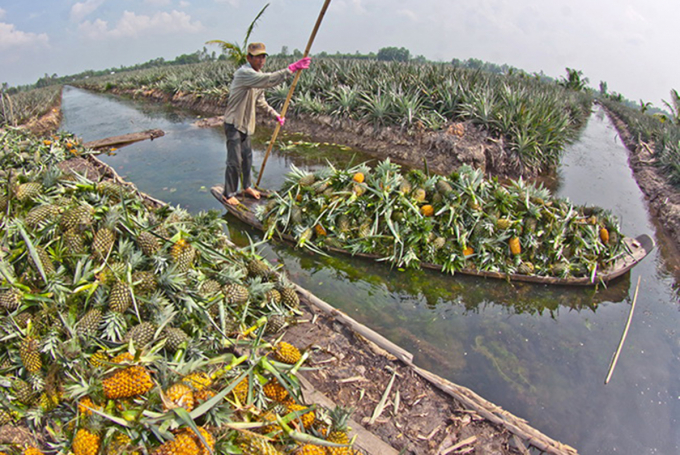
Cau Duc pineapples, a specialty of Hau Giang province, are grown on a 1,600-hectare area with more than two thirds cultivated in Hoa Tien commune (Vi Thanh city). 160 hectares of pineapples in Thanh Thang Cooperative, Hoa Tien commune are grown in accordance to Vietnamese Good Agricultural Practices (VietGAP) and 50 hectares are monitored with Autotimelapse solution. Photo: Duy Khuong.
According to the Agricultural Products Processing and Development Department, the export turnover of Vietnam's fruit and vegetable reached US$ 3,747 billion in 2019. In the first nine months of 2020, the turnover still reached US$ 2,491 billion despite the impact of Covid-19 pandemic.
Vietnam’s export witnessed the second fastest rate in the world, just behind Mexico with the export turnover ranking 7th in the world in 2018.
Vietnam's agricultural products have been exported to over 180 countries with more than 200 categories. In 2019, the export value of vegetables and fruits reached US$ 3,747 billion while the import value was US$ 1,778 billion, thus the trade surplus was US$1.969 billion.
According to the Agricultural Products Processing and Development Department, China is Vietnam’s number one agro-product export destination, accounting for 64.84%. It is followed by US market, constituting only 4%.
The Plant Protection Department said "China is Vietnam’s largest agro-product importer, which is becoming increasingly demanding. Agricultural exports into China would face more stringent checks than usual.
From January 1, 2019, China’s Department of Supervision on Animal and Plant Quarantine under General Administration of Customs officially apply quality and origin control standards on Vietnam’s agro-products.
Following the direction of Ministry of Agriculture and Rural Development, the Plant Protection Department joined hands with provinces and cities to grant traceability codes. By August, 2020, 1,735 growing areas and 1,832 packaging facilities specializing in nine fruits (dragon fruit, mango, bananas, litchi, rambutan, watermelon, longan, jackfruit, mangosteen) were accepted by China’s customs agency, therefore, fruits grown or processed in such areas will be exported to China through official channels.
Among those, Tien Giang province has the most number of accepted codes with 721 ones while Bac Giang and Binh Thuan have 289 and 267 codes respectively. Meanwhile, Ha Giang, Ninh Binh, Bac Ninh, Khanh Hoa, Tra Vinh, and Ca Mau province have only one code.
General Secretary of the Vietnam Fruit and Vegetable Association Dang Phuc Nguyen highlighted “Traceability of fruit and vegetables is gaining currency and is gradually becoming a requirement. This allows consumers to follow the movement of a product through specified stages of production, processing and distribution. Traceability is only possible if produces are grown or processed in a facilities granted with traceability codes or certified with VietGAP, GlobalGAP standards.”
However, the practice of granting traceability codes is slow, with only 7.5% of the total growing areas being certified. Thus, traceability cannot be widely adopted.
General Secretary of the Vietnam Fruit and Vegetable Association Dang Phuc Nguyen shared that China required Thai’s exported fruits and vegetables to have QR codes for traceability since 2019, and this might be applied to Vietnamese fruits and vegetables in a couple of years. Thus, Vietnam needs to gear up for it from now on.
Plant Protection Department warned that if agricultural production and processing facilities do not follow the regulations of importer, Vietnam will risk losing out.
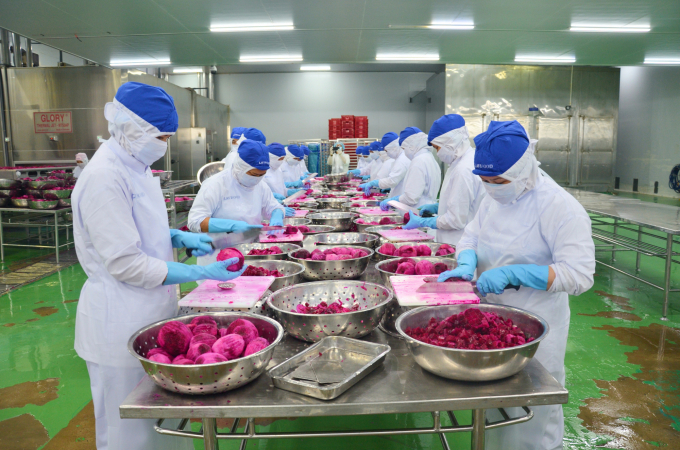
Dragon fruits in Long An Province processed prior to export. Photo: Minh Dam.
According to a recent report of the Department: “In June 2020, General Administration of Customs informed Vietnam of 220 shipments of mangos which did not conform to the regulations.
The Chinese’s customs agency requested to suspend the export of mangos from related stakeholders for further investigation and solutions.
This is attributed to the inefficient management in some localities which did not closely supervise facilities granted with traceability codes. There remains no links between the codes granting agency with the local and central authorities for stricter control.
“Some businesses deliberately used the codes of others for export. This not only adversely affects the reputation of Vietnamese mangoes, but also directly takes a toll on related businesses”, the representative of the Plant Protection Department underscored.
Most of our fruit and vegetable exporters are small in scale, and thereby weak in export planning and management. Besides, some even turn to unethical practices. This causes them to lose competitiveness and influence Vietnamese goods’ prestige in general. Thus, stricter measures are being imposed to resolve the problem once and for all.
Author: Pham Duy Tuong. Translated by Meagan Phan. Edited by Duc Huy.
/2024/05/04/0940-1-145947_475.jpg)
(VAN) The Prime Minister requested MARD to proactively direct flexible solutions to remove difficulties, ensure production, and promote consumption and export of agricultural, forestry, and fishery products.
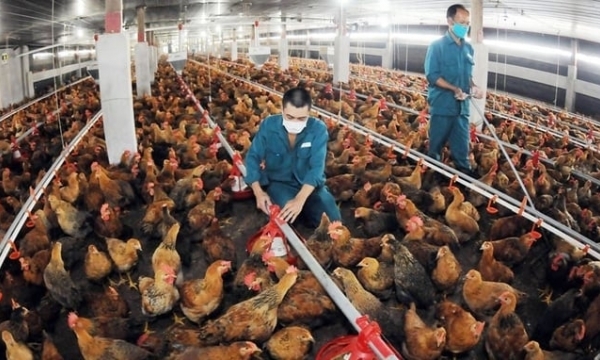
(VAN) Ministry of Agriculture and Rural Development held a conference to deploy some prioritized schemes to implement the Strategy for Livestock Development for the period of 2021-2030 with a vision to 2045.
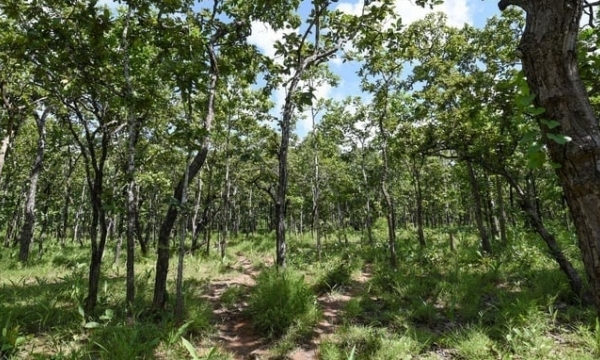
(VAN) The Ministry of Finance will coordinate with the Ministry of Natural Resources and Environment to finalize the project under Directive No. 13/CT-TTg issued by the Prime Minister on May 2nd.
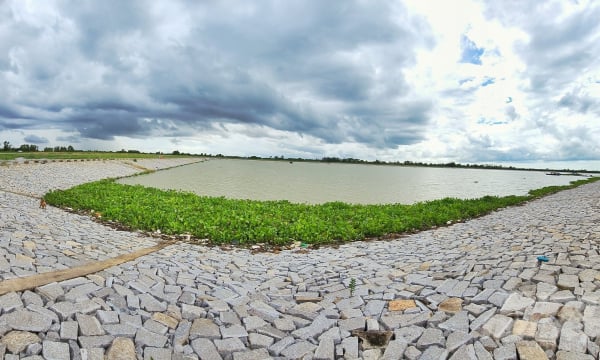
(VAN) Underground water – the huge freshwater reserves of Mekong Delta is facing the risks of salinity. The long-term solution to control and prevent the exploitation of underground water must be caculated.
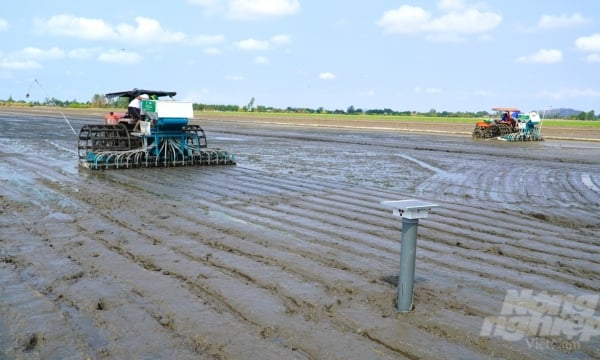
(VAN) In addition to technical support, farmers participating in the pilot model of the 1 million hectares of high-quality rice project will be supported with all materials and infrastructure.
/2024/05/03/2341-2-152131_770.jpg)
(VAN) 'Not every place can combine marine farming and tourism, but wherever we can do, we should do', Dr. Nguyen Chu Hoi said.
/2024/05/03/4925-2-074727_158.jpg)
(VAN) Across the country, there have been 15 forest fires occurring in the provinces of Son La, Dien Bien, Lai Chau, Quang Tri, Nghe An, Ca Mau, Kien Giang, An Giang, etc.